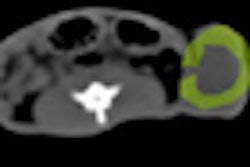Surveillance optical colonoscopy is most appropriate for following high-risk patients and may not be cost-effective or clinically appropriate for individuals at lower risk of colorectal cancer, according to a new study published in Gastroenterology.
Surveillance colonoscopy is widely used, as current clinical guidelines recommend that patients with colonic adenomas undergo periodic surveillance. But the practice carries considerable monetary and resource costs, and can also result in procedure-related complications, according to lead author Sameer Dev Saini, MD, of the Ann Arbor VA Health Services Research and Development Center of Excellence in Michigan.
Saini and colleagues sought to answer questions about appropriate use of surveillance colonoscopy by using a Markov model to analyze published literature on various surveillance strategies from the perspective of a long-term payor (Gastroenterology, June 2010, Vol. 138:7, pp. 2292-2299). Their target patient population was 50-year-old patients with colonic adenomas who were followed until death.
The researchers found that a strategy with colonoscopy performed every three years in high-risk patients and every 10 years in low-risk patients (a 3/10 strategy) was more costly than no surveillance, but was also more effective, with an incremental cost-effectiveness ratio (ICER) of $5,743 per quality-adjusted life year (QALY) gained.
Next, the researchers examined a 3/5 strategy, with colonoscopy performed every three years in high-risk patients and every five years in low-risk patients. This approach was considerably more costly, with an ICER of $296,266 per QALY, but only marginally more effective, producing five fewer cancers in the patient population and one fewer cancer-related death per 1,000 patients entering surveillance.
Finally, a 3/3 strategy was analyzed with colonoscopy performed every three years in both low- and high-risk patients. While this approach might be attractive to gastroenterologists with medicolegal concerns over missed neoplasia, it "is cost-ineffective and potentially harmful in comparison to less intensive surveillance," the authors said. The 3/3 strategy resulted in two fewer cancers than the 3/5 strategy and one fewer cancer-related death per 1,000 patients entering surveillance.
By Brian Casey
AuntMinnie.com staff writer
June 23, 2010
Virtual colonoscopy adds to number of people getting screened, May 17, 2010
5-year C-RADS analysis shows stable VC screening results, May 6, 2010
VC helps screen U.S. minorities, May 4, 2010
Hispanics have less access to colon screening, April 12, 2010
Massive VC study yields trove of extracolonic cancers, March 23, 2010
Copyright © 2010 AuntMinnie.com



















